Sehwan Sharif, Pakistan
Sufism, a broad term for mystical interpretations of Islam, isn’t a by nature a structured theology. Sure, there are saints and ‘orders’ of sainthood within Sufism, but by definition this deeply spiritual, even esoteric realm is a matter of the unseen, rather than of tangible worldly structure. As such, Sufism has no particular home – where Catholicism has the Vatican, and Islam has Makkah (Mecca), Sufism’s centre lies somewhere between the hearts of believers and the heavens above. However if I had to describe a place at which Sufism seemed to converge on Earth, that place might be Sehwan Sharif in Pakistan.
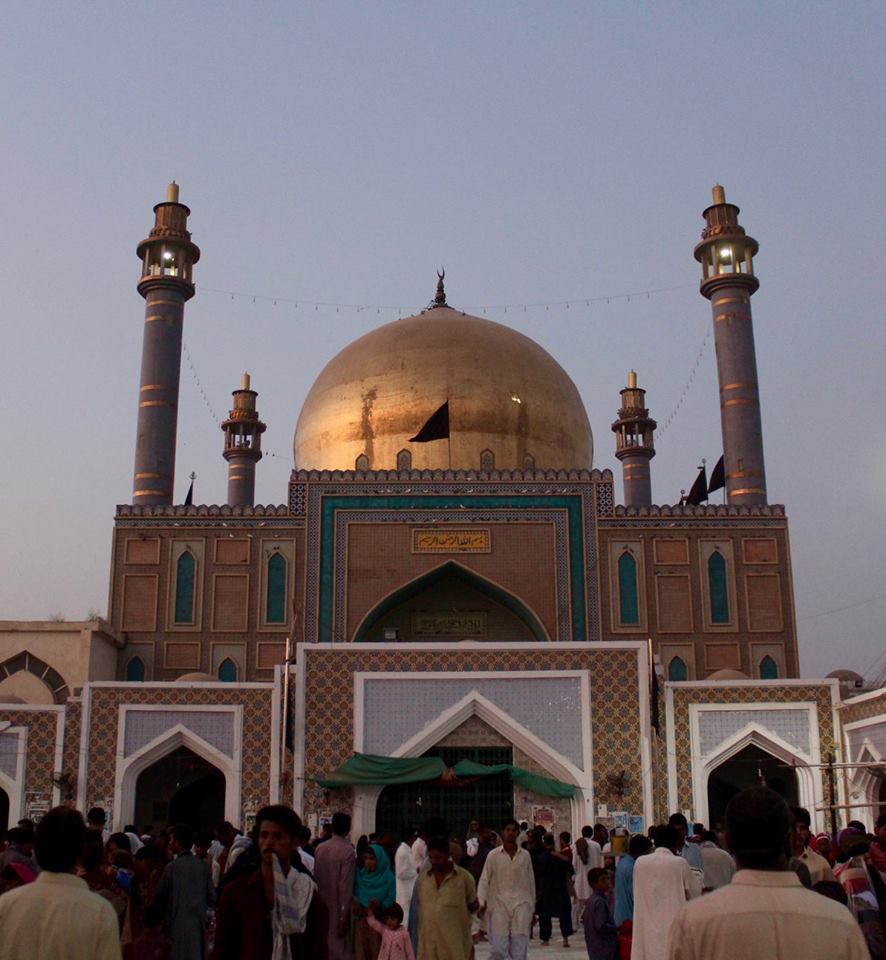
I’m already playing with fire here, because Sufism relies on individual interpretation, and its possible to be a devotee of Sufism without ever having heard of Sehwan Sharif. However it is at Sehwan Sharif that the physical practice of Sufism is at its most tangible, its most spectacularly visible. And man, is it spectacular.
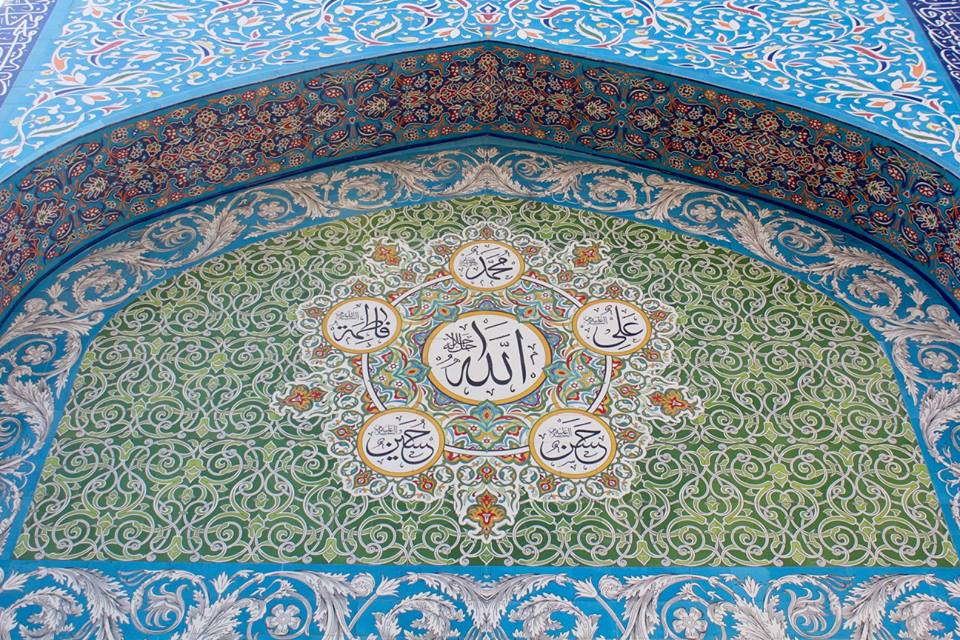
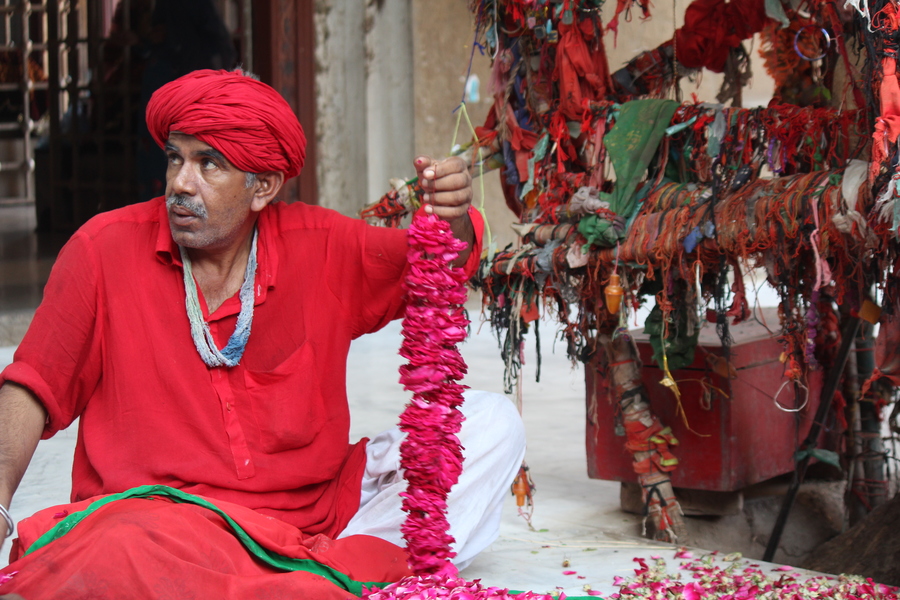
Garland seller at Shrine of Bodla Bahar (Image: Moazam Ali)
Sehwan Sharif is the place where Syed Usman Marvandi, better known by his honorific title Lal Shahbaz Qalander, was laid to rest in 1274. Both a lot and very little is known about the life is Lal Shahbaz Qalander – descended from Arabs, he was born in Afghanistan in 1177 AD, around the same time that the famous poet Rumi was inscribing his poetry in nearby Persia. Qalander devoted his life to the study and teaching of Islam, and was particularly influenced by Sufism after his visit to Multan where he met Bahauddin Zakariya, Fariduddin Ganjshakkar and Syed Jalaluddin Bukhari – all Sufi saints of huge stature. Bahauddin, Ganjshakkar and Bukhari’s tombs all attract large numbers of devotees at Multan, Pakpattan and Uch Sharif respectively, but none quite as much as Shahbaz Qalander. The period represented a flourishing of Sufi understanding, thought, philosophy and teaching; something of a golden era for the tradition.
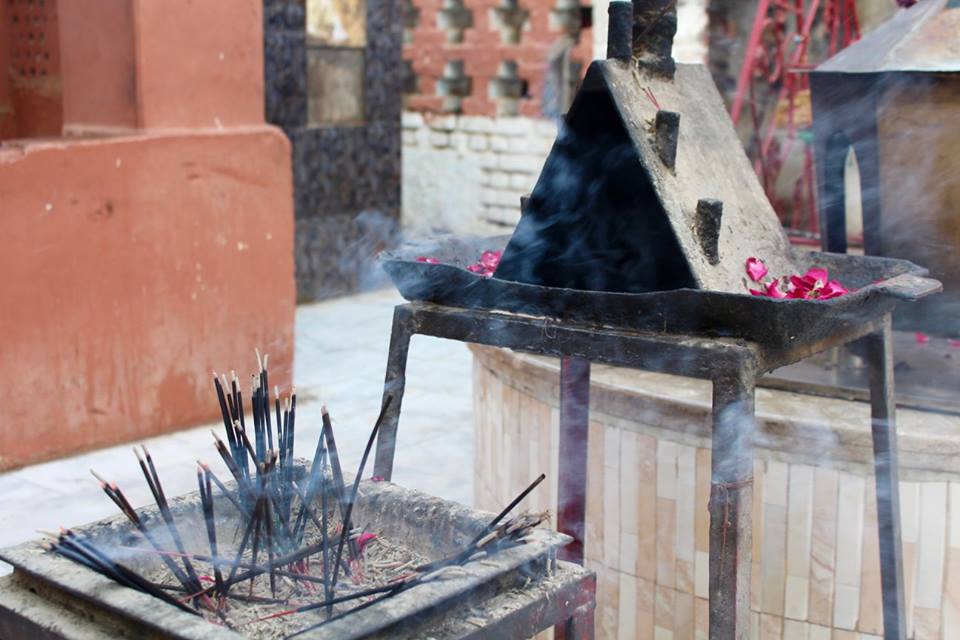
Shahbaz Qalander is believed to have performed several miracles in his time. Among them is the story that when his longtime devotee, Bodla Bahar, was brutally murdered and dismembered, Shahbaz Qalander had his body parts reunited and Bahar resurrected to join him in preaching. Bodla Bahar apparently spent his later life in humble devotion, sweeping the floor of Shahbaz Qalander’s tomb with his long beard which he refused to trim. Bodla Bahar is now buried at a smaller shrine a couple of hundred metres from Shahbaz Qalander.
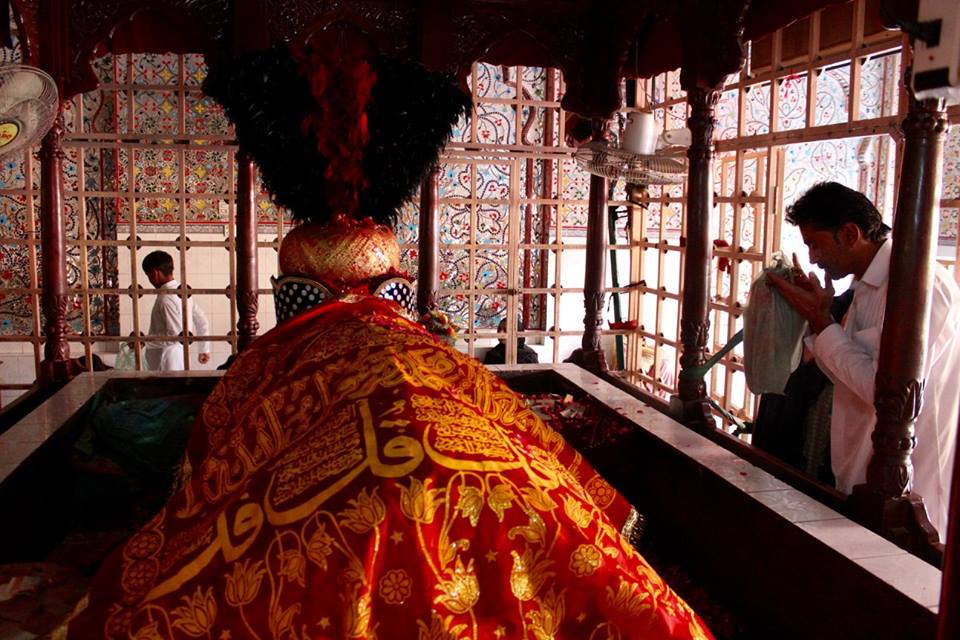
Tomb of Bodla Bahar, Sehwan Sharif
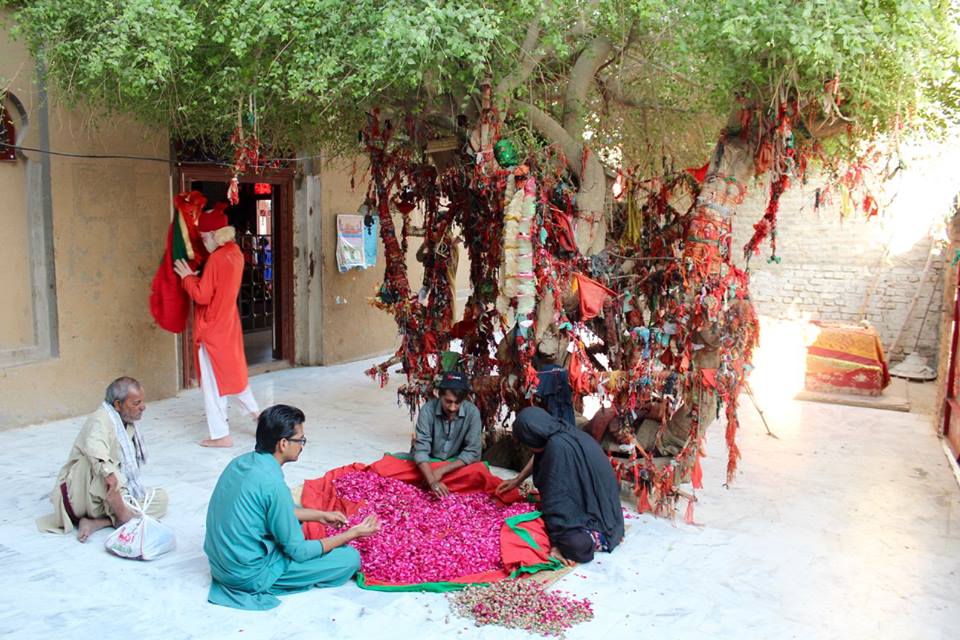
Shrine of Bodla Bahar, Sehwan Sharif
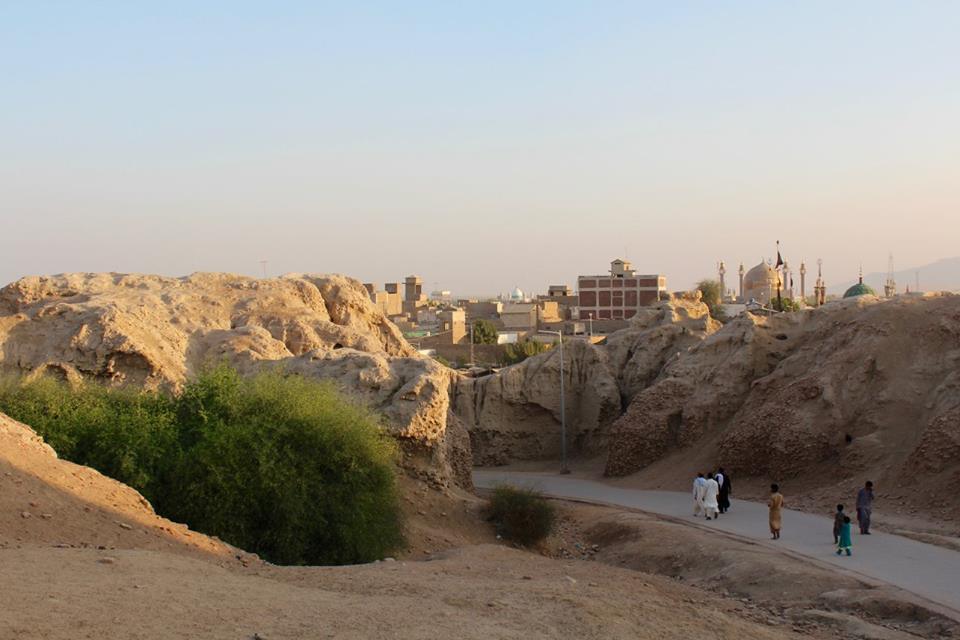
Remnants of Alexander’s Fort, Sehwan Sharif
On another occasion when a local challenged Qalander’s spiritual power, Qalander proved him wrong by flipping and destroying a local fort with one hand. The remnents of the fort in Sehwan Sharif, known in English as Alexander’s Fort, is indeed an odd, slightly inverted shape, and is in disrepair – apparently a result of Qalander’s single-handed miracle. When Qalander died, many local Hindus believed him to be an incarnation of their deity Jhulelal, further exalting his spiritual status.

Shrine of Lal Shahbaz Qalander, Sehwan Sharif
Sehwan Sharif is not an easy place to get to – it’s off the main Lahore – Karachi Highway, and not a lot of transport heads this way. The town thrives off the business of devotees – every shop in the bazaar is somehow devoted to the service of pilgrims, whether it provides the floral garlands to adorn the shrine, rings and gems to be blessed, or cheap meals for arriving travellers. It’s this isolation and devotion that makes Sehwan Sharif so much more special – there’s something ascetic, slightly otherworldly about this town in the semi-desert which exists just to serve the saint and his memory. It’s almost like an encampment of people, exiled from mainstream society and reality, collectively waiting for something miraculous or magical to occur – and depending on your perspective, occasionally it does.
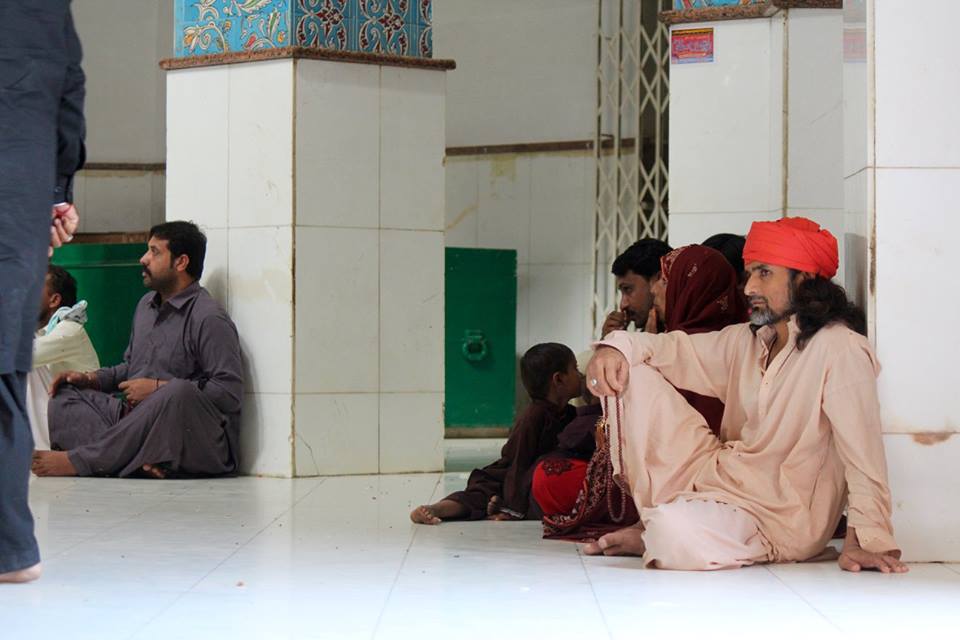
Such is the stature of Lal Shahbaz Qalander and his tomb at Sehwan Sharif that countless devotional songs have been composed about him and his life. The most famous of these tunes is the ubiquitous Dama Dam Mast Qalandar which has featured in everything from devotional performances to Bollywood movies. One of the most famous versions of this is performed by the Qawwali legend, the late Nusrat Fateh Ali Khan;
However for Western ears, some might find the following modern version more accessible – it was performed by Rekha Bharadwaj for the 2013 Indian film “David”;
The time to visit Sehwan Sharif is on Thursday nights. According to the Islamic calendar, the holy day of jummah (Friday) begins at sundown on Thursday night. Immediately after maghrib (sunset) prayers on Thursday night the dhammal begins. Dhammal is a spiritual dance associated with Sufis which often involves spinning in one place, entranced by the beat of the drum and the spirit of Lal Shahbaz Qalander which it invokes.
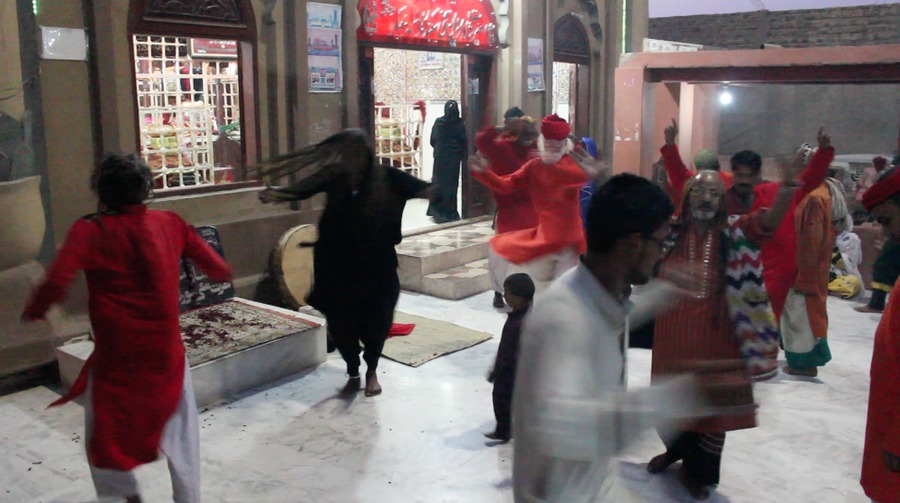
Dhammal at Shrine of Bodla Bahar, Sehwan Sharif
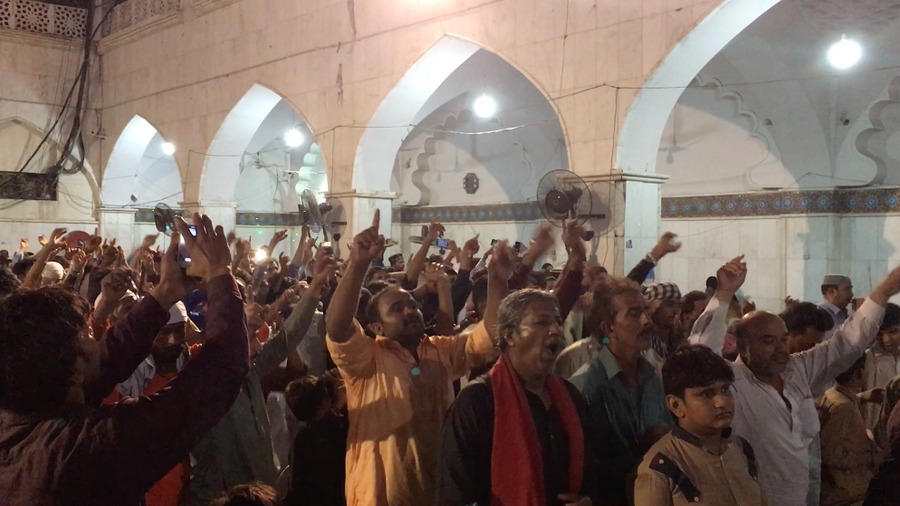
Dhammal at Shrine of Lal Shahbaz Qalander, Sehwan Sharif
Some people stand still in a trance-like, meditative state, while others’ bodies pulsate to the beat. Some, particularly women, flail their bodies and their hair, lost to the rhythm in a spiritual stupor. Some people are in visible ecstasy – contagious smiles spreading across their faces, while others are having less positive experiences, screaming and crying, confronting demons that they are trying to exorcise. The smells of incense and marijuana fill the air as the night falls over the desert.
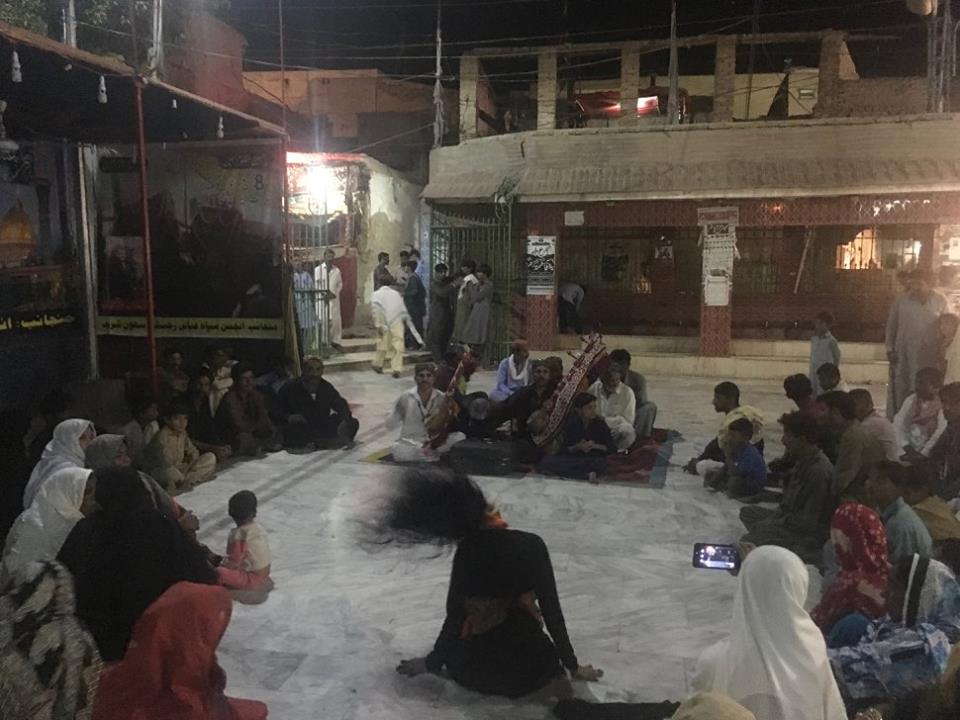
Dhammal at Shrine of Lal Shahbaz Qalander, Sehwan Sharif
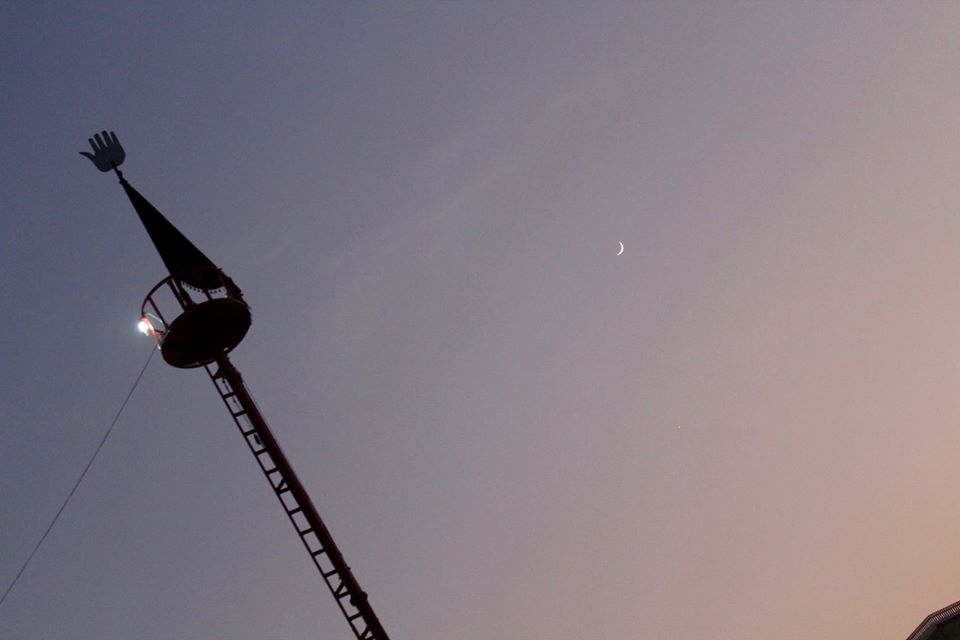
(Image: Moazam Ali)
Sehwan Sharif attracts all sorts of people from across Pakistan and the world – curious travellers, serious believers, lifelong devotees, foreign converts, bored locals, drug addicts, the superstitious, the hopeful, the sick, crippled and dying. All manner of religious devotion is on display here at any time. A man approaches the tomb every night to call out a chant that, apparently, only means something to him and God, from four different sides of the coffin. He repeats this process five times then leaves – and he has been doing this nightly for at least the past two years. Another man, who hasn’t washed or cut his hair in years, arrives with his hands and feet in chains – seemingly a promise that he has made to his saint or his creator.
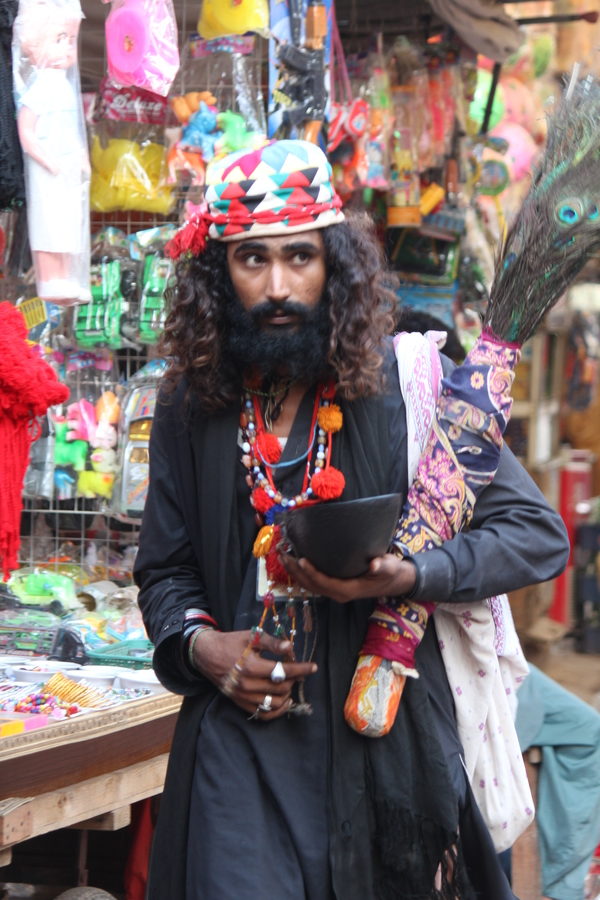
(Image: Moazam Ali)
A group of women arrive from out of the city and drop to the floor at the threshold to the shrine, then crawl up to it in an act of total submission. A young girl with wild hair is dragged by her parents in front of the shrine, shrieking and thrashing – it appears an exorcism is about to take place. Out in the courtyard there’s a destitute family of twenty sleeping on the marble floor – they have travelled by whatever means possible to bring their grandmother, dying of cancer, to the shrine for one last visit, and in the hope that she will be cured.
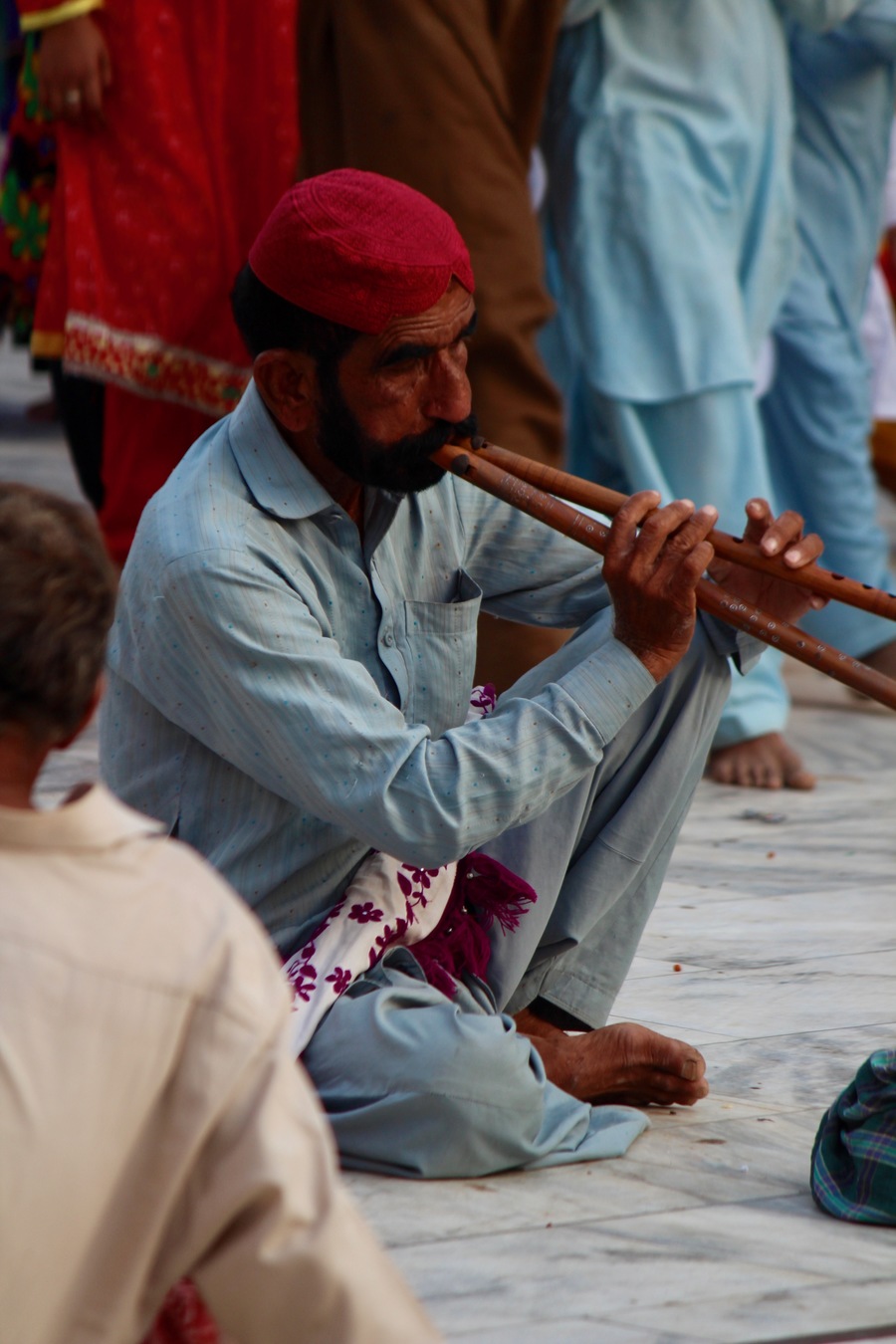
Flute player at Shrine of Lal Shahbaz Qalander, Sehwan Sharif (Image: Moazam Ali)
There are Hindus from Pakistan and India, and from around the world, who have come to pay their respects to Jhulelal. There are Sunni Muslims from Karachi who respect Qalander as a learned scholar and poet. There are Shia from Lahore who have come to visit the man who was a spiritual devotee of Ahl-e-Bayt (the family of the Prophet Muhammad ﷺ)
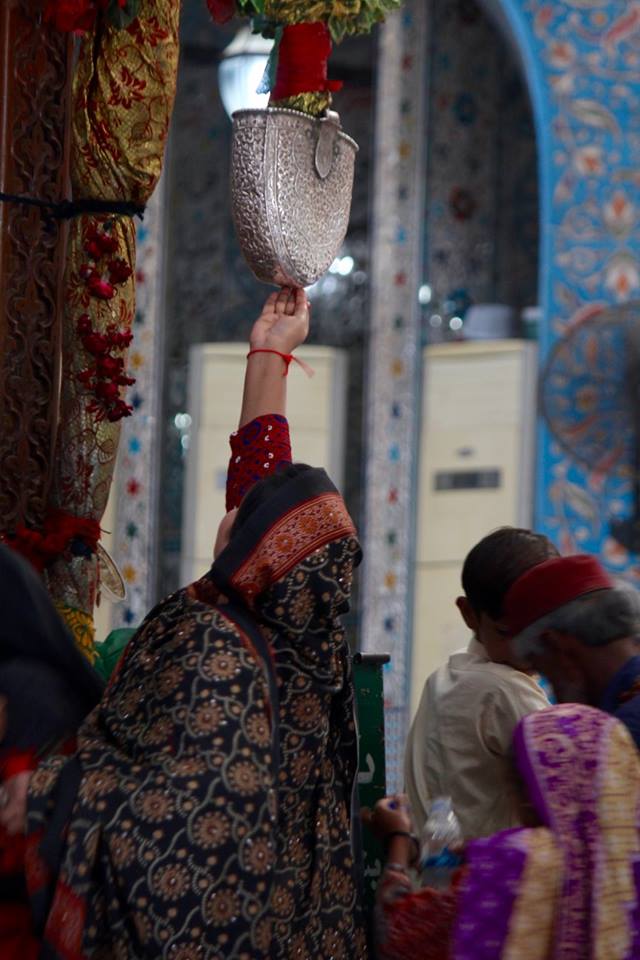
(Image: Moazam Ali)
Needless to say, it’s important to keep an open mind, and prepare to be astonished. Dhammal happens every night at the shrine, and a smaller one occurs at the shrine of Bodla Bahar at the same time, but Thursday nights with Lal Shahbaz Qalander is undoubtedly the main event. And if you’re ready to experience something seriously out of this world, then the urs (death anniversary) or Lal Shahbaz Qalander attracts at least a million people in April – dhammal on steroids would be putting it mildly. My friend Alex over at Lost With Purpose attended the urs this year and has written an excellent post about it. There’s also my vlog post about it on YouTube;
Sehwan Sharif, and Sufi practice in general, has come in for serious criticism from many outsiders who criticise the drug use, dancing and spiritual intercession as unIslamic. This criticism escalated into violence in 2017 when a bomb exploded in the shrine, killing over 70 people. While security at the shrine has been tightened, the spirit of Sehwan Sharif has not been diminished. Regardless of what you believe, a visit to Sehwan Sharif is a sight to behold.
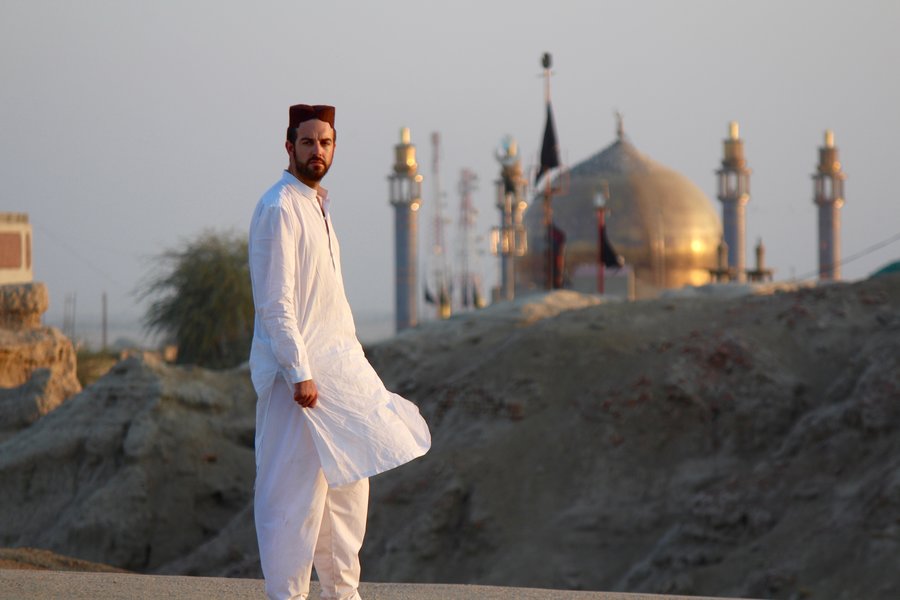
It’s said that if a sick person enters the shrine, or if someone falls sick while at Sehwan Sharif, it is a positive sign that Lal Shahbaz Qalander has chosen to remove whatever bad might be inhibiting the person. On my third day at Sehwan Sharif I indeed fell sick – typical travellers ailments resulting from eating from cheap places by the roadside. In my illness I wasn’t in any mood to think about what my cramps, fever and nausea meant in terms of spirituality – I was stuck in the middle of nowhere, developing a personal relationship with a hotel toilet bowl in a town with only a poorly-equipped medical post. I eventually got better two days later, and made it back to the comfort of my home in Lahore. Laughing about the coincidence with a friend weeks later, I told him that “I had to do the whole experience. “It wasn’t enough just to visit Sehwan Sharif and take some pictures, but I had to fall sick and wait to be healed by the saint himself” I joked. My friend then looked at me and thoughtfully asked “what if you were?” My mind shot back to the spiritual party town under the stars in the middle of nowhere, and the night that I spent without medical attention just waiting to get better in the shadow of the shrine. Then, I had no answer for him.
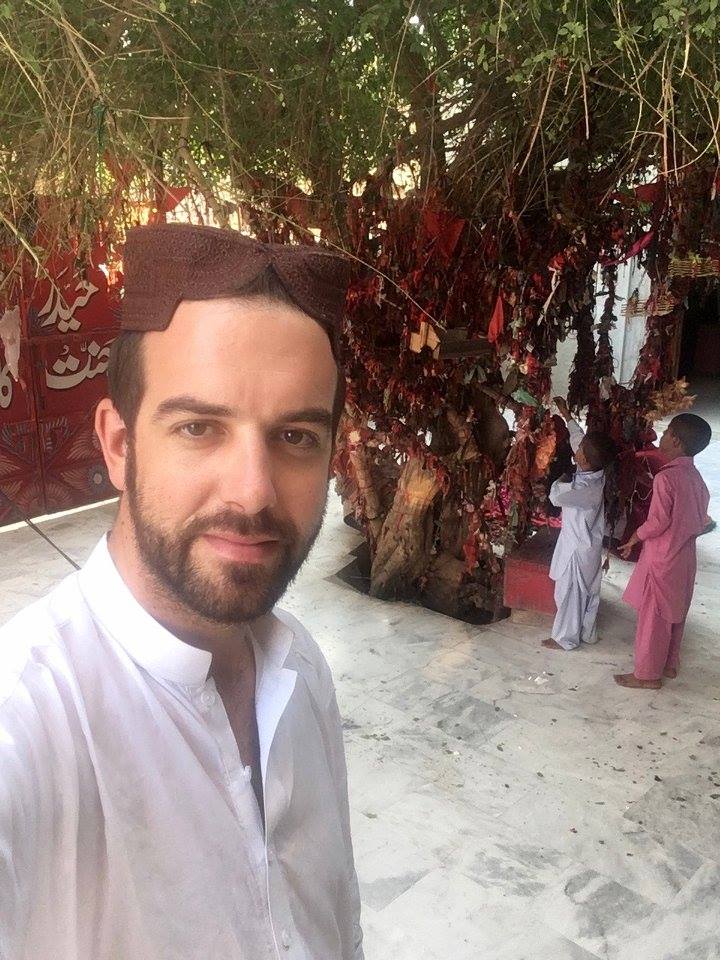


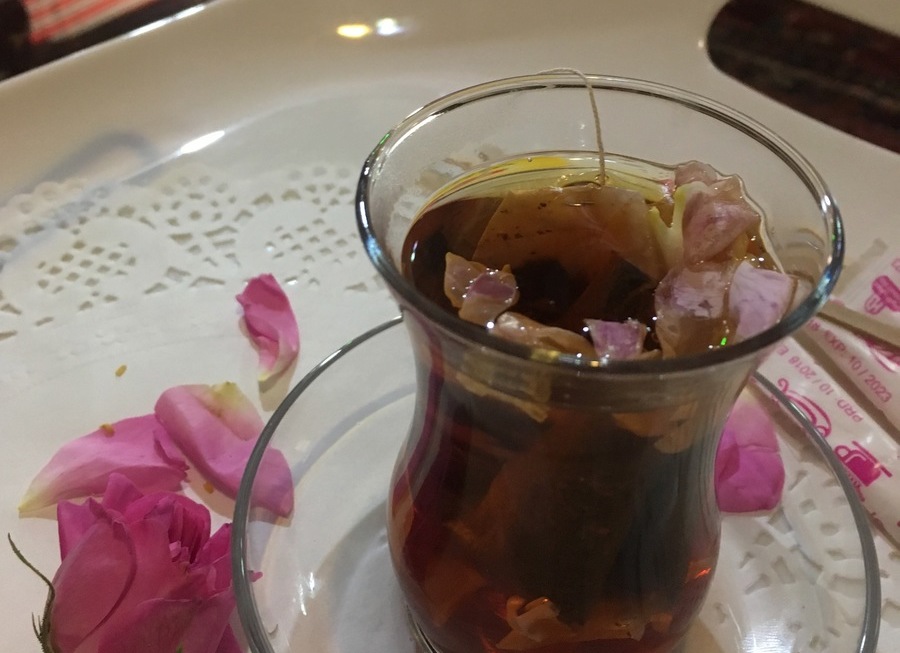


This is the first time I am hearing about Sufism, Tim. I love such posts from which I can learn a lot and which are enlightening. Exceptional job, keep it up!
Thanks for stopping by, Lydia! I hope you can visit somewhere like this soon!
Looks amazing, Sufism seems to go hand in hand with some of the most attractive and beautiful (yeah ok they are synonyms) Islamic architecture. What an incredible place and amazing photos Tim
Thanks for reading, Andy 🙂
Thanks a lot for sharing this wonderful information. I am a student of NED University of Engineering and Technology Karachi, Pakistan.
This article has helped me a lot in completion of my assignment of sociology.
Thanks for reading!
i have alot of pics n videos of SHEWAN SHARIFF.